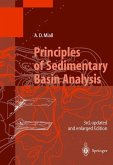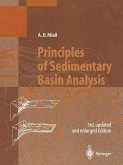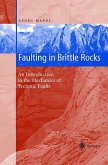Preface to Second Edition
It has been more than a decade since the appearance of the First Edition of this book. Much progress has been made, but some controversies remain.
The original idea of Sloss and of Vail (building on the early work of Blackwelder, Grabau, Ulrich, Levorsen and others) that the stratigraphic record could be subdivided into sequences and that these sequences store essential information about basin-forming and subsidence processes remains as powerful an idea as when it was first formulated. The definition and mapping of sequences has become a standard part of the basin analysis process. Subsurface methods make use of advanced seismic-reflection analysis methods, with three-dimensional seismic methods, and seismic geomorphology adding important new dimensions to the analysis. Several advanced textbooks have now appeared that deal with the recognition and definition of sequences and their interpretation in terms of the evolution of depositional systems, the recognition and correlation of bounding surfaces, and the interpretation of sequences in terms of changing accommodation and supply. This is not one of these books.
The main purpose of this book remains the same as it was for the first edition, that is, to situate sequences within the broader context of geological processes so that geoscientists might be better equipped to extract the maximum information from the record of sequences in a given basin or region. The following are the main themes of the book:
Central to the concept of the sequence is the deductive model that sequences carry messages about the "pulse of the earth". In the early modern period of sequence stratigraphy (the late 1970s and 1980s) the model of global eustasy was predominant, and it was to offer a critique of that model that provided the impetus for developing the first edition of this book. Model-building has been central to the science of geology from the beginning it was certainly a preoccupation of such early masters of the science as Lyell, Chamberlin, Barrell and Ulrich. A historical evaluation of the contrasting deductive and inductive approaches to geology has been added to this edition of the book, in order to provide a background in methodology and a historical context.
Standard sequence models have become very well described and understood for most depositional settings, and are the subject of several recent texts. Two chapters are provided in this edition in order to outline modern ideas, and to provide a framework of terminology and illustration for the remainder of the book.
A major component of the first edition was devoted to a documentation and illustration of the main types of sequence in the geological record, ranging from those representing hundreds of millions of years of geological evolution to the high-frequency sequences formed by rapid cyclic processes lasting a few tens of thousands of years. Such documentation remains a major component of the book, and has been updated with new examples.
The central core of the first edition was composed of a detailed description and evaluation of the major processes by which sequences are formed. This remains the central focus of the book and has been updated.
Perhaps partly in response to this book, many geoscientists have recognized the complexity of the geological record, have adopted a rigorous inductive approach to their analyses and remain committed to a multi-process interpretation of their rocks. Such an approach can provide a rich array of ideas regarding regional tectonics and basin analysis. However, the original Vail model of global eustasy remains convincing to many, and a powerful guide to interpretation. This writer finds that much of the work in this area retains a flavour of "working backwards from the answer" that was already troubling twenty years ago. The practical, theoretical and methodological issues surrounding this still controversial area comprise a concluding section of the
It has been more than a decade since the appearance of the First Edition of this book. Much progress has been made, but some controversies remain.
The original idea of Sloss and of Vail (building on the early work of Blackwelder, Grabau, Ulrich, Levorsen and others) that the stratigraphic record could be subdivided into sequences and that these sequences store essential information about basin-forming and subsidence processes remains as powerful an idea as when it was first formulated. The definition and mapping of sequences has become a standard part of the basin analysis process. Subsurface methods make use of advanced seismic-reflection analysis methods, with three-dimensional seismic methods, and seismic geomorphology adding important new dimensions to the analysis. Several advanced textbooks have now appeared that deal with the recognition and definition of sequences and their interpretation in terms of the evolution of depositional systems, the recognition and correlation of bounding surfaces, and the interpretation of sequences in terms of changing accommodation and supply. This is not one of these books.
The main purpose of this book remains the same as it was for the first edition, that is, to situate sequences within the broader context of geological processes so that geoscientists might be better equipped to extract the maximum information from the record of sequences in a given basin or region. The following are the main themes of the book:
Central to the concept of the sequence is the deductive model that sequences carry messages about the "pulse of the earth". In the early modern period of sequence stratigraphy (the late 1970s and 1980s) the model of global eustasy was predominant, and it was to offer a critique of that model that provided the impetus for developing the first edition of this book. Model-building has been central to the science of geology from the beginning it was certainly a preoccupation of such early masters of the science as Lyell, Chamberlin, Barrell and Ulrich. A historical evaluation of the contrasting deductive and inductive approaches to geology has been added to this edition of the book, in order to provide a background in methodology and a historical context.
Standard sequence models have become very well described and understood for most depositional settings, and are the subject of several recent texts. Two chapters are provided in this edition in order to outline modern ideas, and to provide a framework of terminology and illustration for the remainder of the book.
A major component of the first edition was devoted to a documentation and illustration of the main types of sequence in the geological record, ranging from those representing hundreds of millions of years of geological evolution to the high-frequency sequences formed by rapid cyclic processes lasting a few tens of thousands of years. Such documentation remains a major component of the book, and has been updated with new examples.
The central core of the first edition was composed of a detailed description and evaluation of the major processes by which sequences are formed. This remains the central focus of the book and has been updated.
Perhaps partly in response to this book, many geoscientists have recognized the complexity of the geological record, have adopted a rigorous inductive approach to their analyses and remain committed to a multi-process interpretation of their rocks. Such an approach can provide a rich array of ideas regarding regional tectonics and basin analysis. However, the original Vail model of global eustasy remains convincing to many, and a powerful guide to interpretation. This writer finds that much of the work in this area retains a flavour of "working backwards from the answer" that was already troubling twenty years ago. The practical, theoretical and methodological issues surrounding this still controversial area comprise a concluding section of the
From the reviews of the second edition:
"In this new edition ... Miall (Univ. of Toronto) examines in detail the results of Vail and his followers, showing where he agrees with those results and where he feels that the Vail/Exxon model has gone too far in extrapolating from these results. ... A must-read book for those actively involved in stratigraphy. Summing Up: Highly recommended. Graduate students and above." (C. W. Dimmick, Choice, Vol. 48 (5), January, 2011)
"The considerably expanded and updated second edition of this book is subdivided into four parts ... . These four parts contain 15 chapters altogether. ... the book is a most welcome update and overview of the rapidly developing field of sequence stratigraphy. All students and professional geologists working in basin analysis will certainly like to have it available in their private libraries. Considering the relatively low price, I can therefore wholeheartedly recommend it." (T. J. A. Reijers, The Sedimentary Record, January, 2011)
"In this new edition ... Miall (Univ. of Toronto) examines in detail the results of Vail and his followers, showing where he agrees with those results and where he feels that the Vail/Exxon model has gone too far in extrapolating from these results. ... A must-read book for those actively involved in stratigraphy. Summing Up: Highly recommended. Graduate students and above." (C. W. Dimmick, Choice, Vol. 48 (5), January, 2011)
"The considerably expanded and updated second edition of this book is subdivided into four parts ... . These four parts contain 15 chapters altogether. ... the book is a most welcome update and overview of the rapidly developing field of sequence stratigraphy. All students and professional geologists working in basin analysis will certainly like to have it available in their private libraries. Considering the relatively low price, I can therefore wholeheartedly recommend it." (T. J. A. Reijers, The Sedimentary Record, January, 2011)








